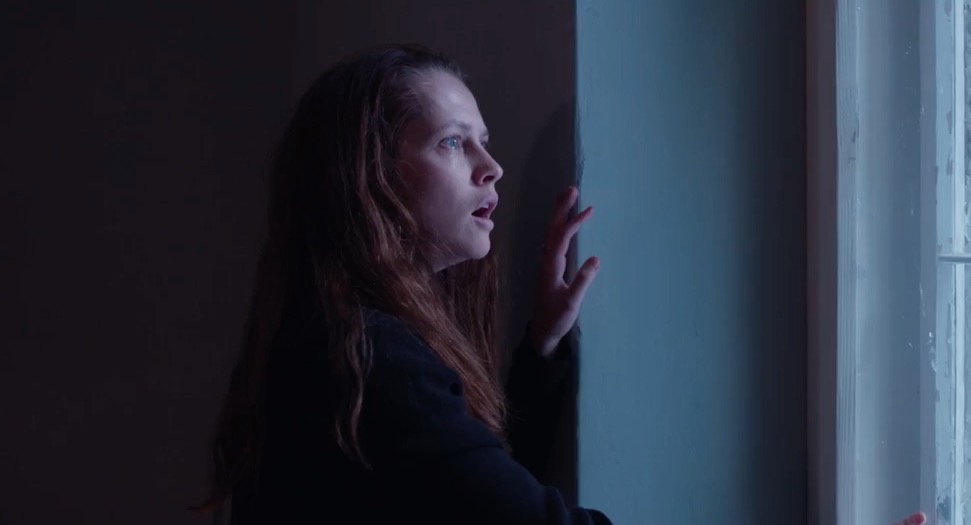Every girl’s worst nightmare – brought to unmissable, feature-length life.
Click to watch the trailer here
- Teresa Palmer as Clare
Teresa pulls off the wide-eyed nervousness of a student on her gap year pretty well, but it’s once things start to go wrong for young photographer Clare that her performance becomes outstanding. She’s brittle and raw: a portrait of humanity trying to remain intact after becoming entrapped like an animal. It’s no surprise that she nails the intensity following what reportedly was a 4 hour long audition process – nor is it surprising that it took 4 hours to demonstrate a capability to play this character, since there are forever shifting layers. Clare continually reveals new sides to herself with every terrible ordeal Andi orchestrates. She’s gaunt, hollow, feral, loving, terrified, terrifying – Berlin Syndrome is a case in point as to why people should start treating Palmer as the heavyweight she is and get her out of the romcom scene. Here’s to hoping she endeavours on more projects like this in the future.
2. Cate Shortland
Directing with a devastatingly clear vision, Shortland has managed to show off both her skills at crafting something that appears and feels artistic but is also just simply entertaining, and brutal. It’s an inspiring, but nevertheless ugly, story told with a beautiful look. Also, Shortland’s touch is important to the telling; this is no male formulated, fetishist, ‘kidnapped girl’ porn. Clare is simply a girl put through the worst case scenario that anyone of us has ever felt in the company of a stranger – but she is still herself. The film holds on to the character’s soul, her energy and her curiosity. It shines through in wonderfully done moments – as Andi himself leaves the apartment and continues on with his life outside, she whiles away the hours fiddling and playing, spinning down the hall on his desk chair, searching for escape. Also the delicate, slower moments where she attempts to reconnect to the world through the boarded windows are masterfully shot and actually very, very emotional (snow still looks pretty when it’s through a sliver in a locked room).
Cate directs this horror-survival well but does not forget to give it heart.
3. The anatagonist
I’m not even slightly worried about spoiling the fact that Andi, Clare’s accidental foreign romance, is more than he seems. This is because:
a) It will only take you about thirty seconds to realise that something is off for yourself. In a brilliantly controlled bit of acting, Max Reimelt plays the handsome, strawberry sharing german with a slightly uncanny edge from the start. (A red fire truck with it’s sirens going off literally speeds by, blaring a warning, during their meet-cute date near Clare’s hostel). Shortland feeds the tension – you know something is going to happen, something unpleasant, and it’s most likely going to hinge on him. However, the scenes wherein Clare has no idea are all the more powerful because we do sense what she does not.
b) The reveal of what he is is done with almost no fuss or fanfare. It’s a swift twist; the film is more concerned with the fallout of the rug pull on both Andi and Clare’s lives, and the perverse domesticity that they share, than it is with the actual rug pull itself – that happens just short of a quarter of the way through. The film is more than the duplicity of the villain, and that’s actually what makes it so good.
4. By the numbers, and not
Berlin syndrome is a perfectly done thriller to a mathematical degree: the most immaculate balance of suspense (horrific, make-you-sweat suspense, the kind of suspense that makes my mum throw things at the telly) emotional hook, and payoff. It’s a perfect example of the genre many know and love. However, the material, and the complex and multi-faceted way the material is handled – as our two character’s contemplate what they are to one another, and push the boundaries of the captor and captive – is quite unlike anything else I’ve seen done in cinema.
It’s doesn’t hold back on violence or provocation, but it also has some real psychological intelligence. A fresh take on the Stockholm syndrome that is trily deserving of an audience.
5. Depth of field
As a film, in part, about a photographer, this film has such a witty use of iconography and imagery throughout. I’m sure I didn’t catch them all and it would be fun for someone to see what they could interpret for themselves. This element gives this movie a richness that a lot of thrillers do not. But for the sake of evidencing this reason: Clare starts off with the camera and we follow her as she captures the streets of Berlin, later, on a drastically different kind of moment, Andi turns the camera on her, posing her with rope and lingerie – he has stolen her gaze. Clare wears a wolf mask she spots on the pavement to tease him on the first day she meets him, later, when doing something terrible, Andi is lit with a backlight for a halo – she’s not the predator, and he’s not the angel, it’s a touch of irony here and there.
I’m certain there’s more that could be analysed. This film is something that should be reasonably seen 10 times for every detail to be noted, let alone once.
